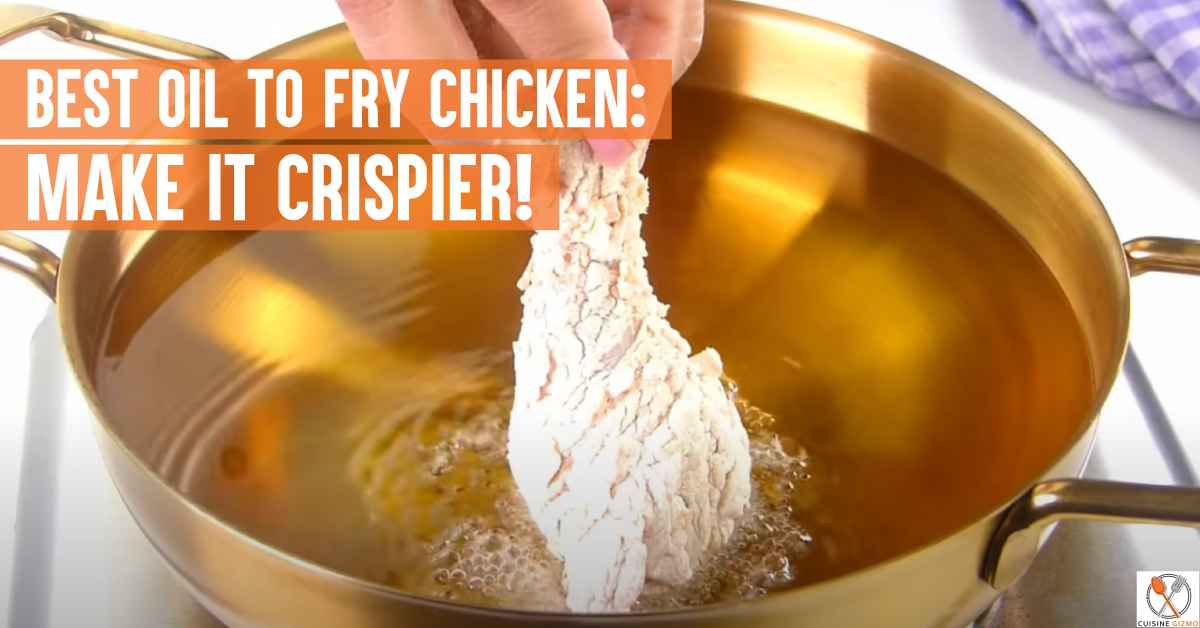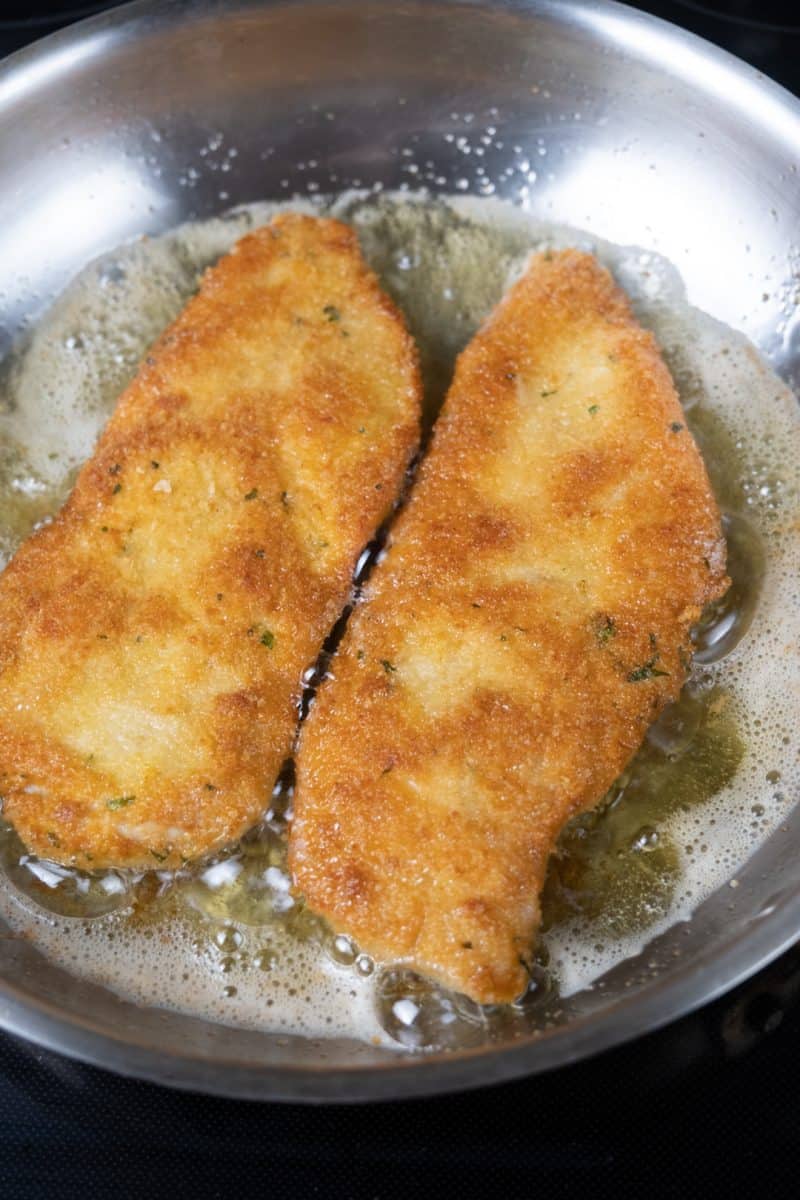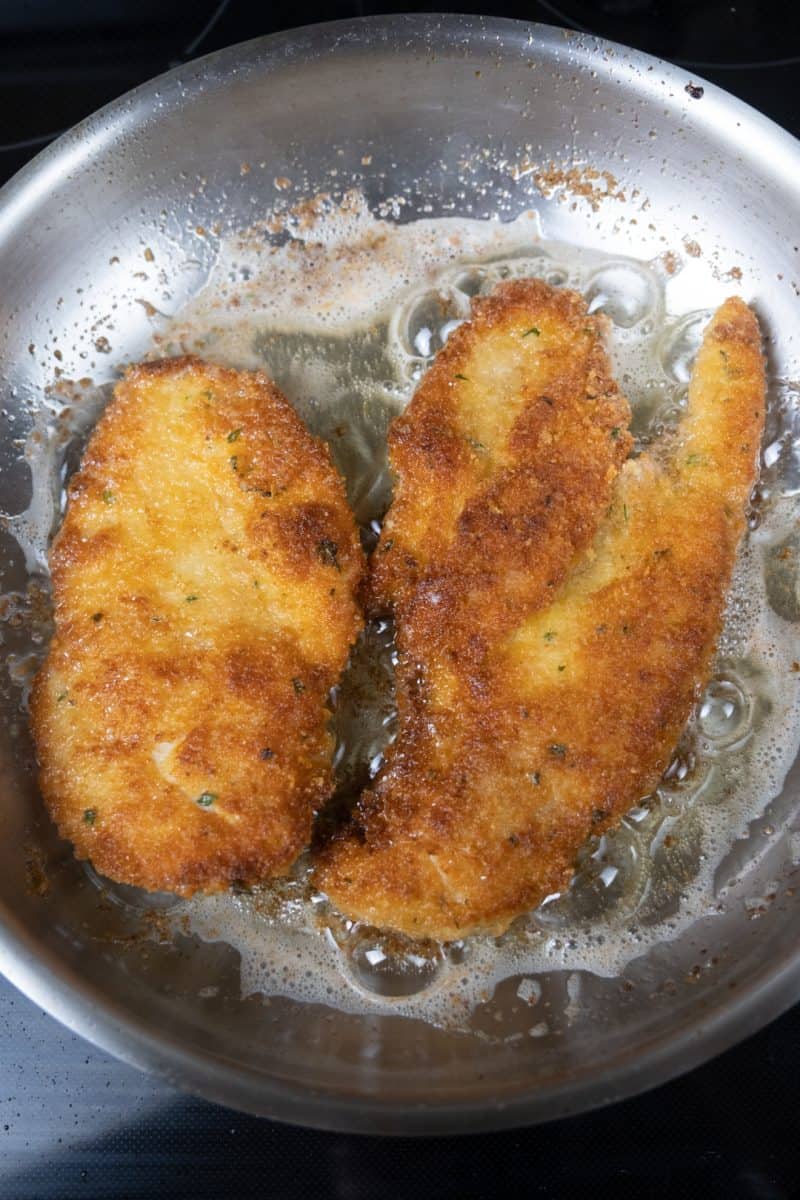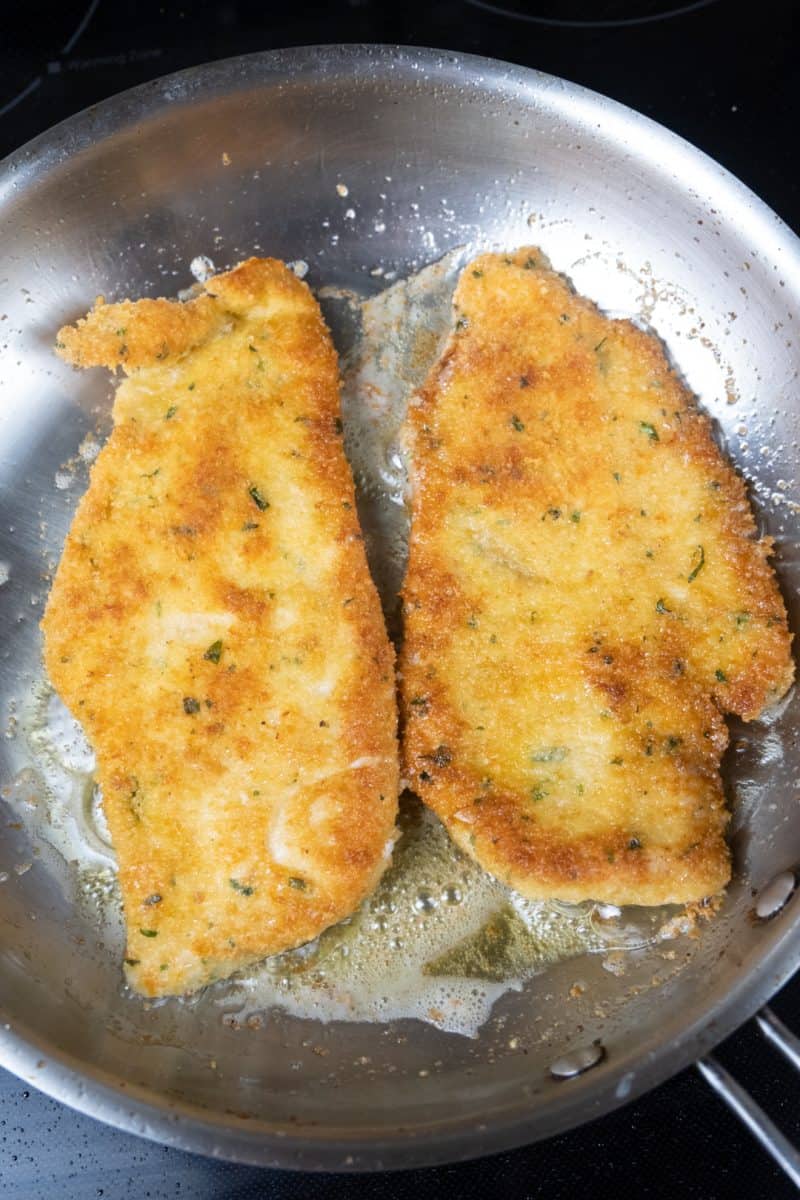Fried chicken is an iconic dish in American cuisine, beloved for its crispy, seasoned exterior surrounding tender, juicy meat While frying chicken may seem simple, choosing the right oil to use is crucial for achieving the perfect balance of crispy crust and moist interior
When selecting an oil for frying chicken, there are a few key factors to consider:
-
Smoke point – The temperature at which oil starts to burn and smoke. For frying, you need an oil with a high smoke point of 400°F or above.
-
Flavor – The taste and aroma of the oil will come through in your fried chicken. A neutral oil allows the chicken flavor to shine.
-
Cost – Buying oil in bulk sizes can help lower the cost per use.
-
Health – Some oils are healthier than others based on their fat compositions.
Taking these aspects into account, here are the top oils to use for crispy fried chicken every time:
Peanut Oil
Peanut oil is one of the most popular choices for deep frying chicken. It has a high smoke point of 450°F, meaning it can withstand the high heat required for frying without burning. Peanut oil has a subtle, nutty flavor that lets the chicken take center stage. It is also resistant to absorbing flavors, which is useful for restaurants that fry different foods in the same oil. Peanut oil contains healthy monounsaturated fats and vitamin E. The only downside is potential peanut allergy concerns.
Canola Oil
With a smoke point of 400°F and neutral taste, canola oil is ideal for frying chicken. It is versatile and budget-friendly, making it a pantry staple. Canola oil has less saturated fat than many other oils. It also contains omega-3 fatty acids and vitamin E. Highly processed canola oil may have fewer nutrients, however, so cold-pressed is best. Overall, this healthy oil is great for crispy fried chicken.
Vegetable Oil
As a blend of oils, vegetable oil offers a high smoke point and neutral flavor perfect for fried chicken. It is affordable and versatile for all kinds of frying. With a smoke point of 450°F, it can withstand high frying temperatures. Vegetable oil is also readily available. The mix of oils varies by brand, but it typically includes soybean, canola, and/or sunflower oil. This makes it a great all-purpose option.
Avocado Oil
A relative newcomer, avocado oil has a very high smoke point of 520°F. This makes it an excellent choice for high-heat frying. Avocado oil has a mild, buttery taste that enhances fried chicken without overpowering it. It is also one of the healthier oil options, as it contains heart-healthy monounsaturated fats and antioxidants. The only downside is the higher cost.
Corn Oil
With a smoke point of 450°F and neutral flavor profile, corn oil allows the chicken to shine through. It is a common choice for frying due to its affordability and resistance to flavor absorption. Corn oil also contains beneficial polyunsaturated fats when used moderately. Overall, this pantry staple makes deliciously crispy fried chicken.
Olive Oil
While it has a lower smoke point of about 375-405°F, olive oil can still work for frying chicken at moderate temperatures. Use refined olive oil for the higher smoke point. The characteristic olive oil flavor comes through wonderfully in fried chicken. And it adds heart-healthy fats. Just be mindful of the lower smoke point to prevent burning.
Coconut Oil
Coconut oil is growing in popularity for frying chicken. With a smoke point of 350°F, it can fry chicken with a subtle coconut aroma. Coconut oil is about 90% saturated fat, however, so it’s best used occasionally. It also solidifies below 77°F. But the creamy texture and light coconut taste complement fried chicken beautifully.
Tips for Crispy Fried Chicken Every Time
Achieving perfectly fried chicken with a crisp, golden crust and juicy interior takes a few tricks:
-
Maintain oil temperature between 325-375°F for even cooking.
-
Allow the chicken to rest after frying to allow the crust to crisp up further.
-
Use a neutral-flavored oil like canola or vegetable to let the chicken shine.
-
Refrigerate chicken pieces prior to frying for enhanced crispness.
-
Pat dry chicken pieces before coating to reduce splattering and allow the coating to stick.
-
Fry chicken in batches to maintain oil temperature and prevent overcrowding.
-
Set fried chicken on a wire rack rather than paper towels to allow air circulation.
-
Use a thermometer to check internal temperature and prevent undercooking.
-
Allow cooked chicken to rest 5-10 minutes before serving for juicier meat.
With high-quality oil heated to the proper frying temperature, you can enjoy the crispiest, crunchiest fried chicken around. A few small tweaks makes all the difference in achieving fried chicken perfection.
Healthier Oils for Frying Chicken
For those looking to use a more health-conscious oil, here are some good options:
-
Avocado oil – With a very high smoke point and neutral flavor, avocado oil is one of the healthier choices. It contains beneficial monounsaturated fats and antioxidants.
-
Canola oil – As a monounsaturated oil low in saturated fat, canola is healthier than many other oils. Go for cold-pressed oil for more nutrients.
-
Sunflower oil – High in vitamin E and monounsaturated fats, sunflower oil is light in flavor and great for frying.
-
Safflower oil – With a high smoke point and polyunsaturated fats, safflower oil is a good choice for health-conscious cooking.
-
Peanut oil – With its monounsaturated fat content and resistance to absorbing flavors, peanut oil is a healthier option.
When choosing a frying oil, balance factors like smoke point and nutrition profile. Oils higher in monounsaturated and polyunsaturated fats are healthier than those high in saturated fats. With so many good oils to pick from, you can fry up crispy chicken that’s both delicious and better for you.
Frying Chicken Safely
To maintain both safety and ideal flavor when frying chicken, keep these tips in mind:
-
Always use fresh, high-quality oil rather than old, spoiled oil.
-
Heat the oil slowly to reach the target frying temperature.
-
Use a deep fryer thermometer to monitor oil temperature.
-
Keep hot oil away from children by frying with adult supervision.
-
Prevent burns by wearing long sleeves and using caution when cooking.
-
Do not overfill the pot or fryer to reduce the chance of spillage.
-
Turn off the heat source if the oil starts smoking heavily.
-
Allow the oil to fully cool before straining and storing it.
-
Store oil in a cool, dark place in an airtight container to maximize shelf life.
-
Never pour used hot oil directly down the drain, as it can clog pipes.
-
Discard oil that smells unpleasant or looks dark and viscous.
By following basic safety practices when frying chicken, you can prepare perfectly crispy chicken while keeping your kitchen secure. Don’t let safety concerns stop you from enjoying the satisfying crunch of homemade fried chicken.
Conclusion
When prepared properly, fried chicken cooked in the right oil is crispy and crunchy on the outside while moist and juicy inside. Peanut oil is one of the most popular choices thanks to its high smoke point and neutral flavor that lets the chicken shine. Canola, vegetable, corn, avocado, olive, and coconut oils are also good options. Allowing the chicken to rest before and after frying, maintaining the target oil temperature, and patting the chicken dry before coating are key tips for success. With a high-quality, fresh oil heated to the ideal frying temperature, you can achieve the crispiest, most mouthwatering fried chicken ever. Just be sure to fry safely by using caution, monitoring the hot oil closely, and storing it properly after cooking. With this guide, you have all the information needed to make perfect fried chicken any night of the week!

Smell of each oil
I wasnt planning on having this be a category in the blog but the very first thing I noticed was the smell of the oil as the pan heated. Im so used to the smell of canola oil that when I started smelling the avocado oil, I was pleasantly surprised.
I did everything here in alphabetical order so that it would be easy to track everything on video. So, I started with avocado oil. I had never fried cutlets in avocado oil. The very first thing I noticed was the smell. The avocado oil smelled sweet and nutty. It was really delightful. It shimmered so perfectly in the pan. You could see it evenly across the pan. As it sat in the pan it slightly yellowed while it was heating up. The fragrance of the avocado oil was definitely my favorite.
It might have been because I had just smelled the avocado oil, but the canola oil just smelled…BAD. The only scent I can relate it to is the smell of a fryer. It was bad in comparison. Obviously, canola oil doesnt smell “bad.” It didnt have the delightful scent that the avocado oil did. It just smelled like oil. The canola oil smell was my least favorite. Also, when watching the canola oil shimmer, it got slightly cloudy and wasnt shimmering evenly across the pan.
The olive oil was a bit different. It smelled almost a bit fruity or sweet. Maybe even a bit tangy. It definitely had a nice smell to it. You could smell the olives. It was a really refreshing smell, I just preferred the nutty avocado scent.
Texture of each cutlet
One of the most important factors in my mind was texture when deciding what oil to fry chicken cutlets in. Were they fried evenly, how did the chicken cook, etc?



Avocado oil won this category again! The cutlets were perfectly cooked and completely evenly fried. The inside did not take on that shredded look of overcooked chicken. The avocado oil definitely “cooked” the cutlet the best.
Third place again was the canola oil. The cutlets were unevenly fried. Some of the cutlets had to be slightly overcooked because half the cutlet wasnt cooking at the same rate the other half was. The texture inside some of the canola oil cutlets was just slightly different than the avocado oil. Almost a bit chewier.
The olive oil took second place here. The cutlets werent perfectly even, but they were close enough. The texture of the chicken was close to that of the avocado oil cutlets. They were overall, a great texture, evenly cooked through, just could have been fried slightly darker in certain areas.
Best Oils for Frying Chicken
FAQ
What is the best oil to fry chicken in?
- Canola Oil. With a high smoke point and neutral flavor, canola oil is excellent for frying chicken. …
- Vegetable Shortening. Vegetable shortening is a solid fat that is commonly used for frying chicken. …
- Lard. …
- Peanut Oil. …
- Coconut Oil.
What oil is best for frying?
Can I fry chicken with vegetable oil?
Yes, you can fry chicken with vegetable oil. Vegetable oil is a good choice for frying because it has a high smoke point, meaning it can withstand high temperatures without burning, according to Frymax and Allrecipes. Other suitable oils include canola oil and peanut oil.
What oil does KFC use for their fried chicken?
KFC typically uses a blend of vegetable oils for frying their chicken, with canola oil and palm oil being common components. The exact blend can vary by location and over time based on supply and cost considerations.
